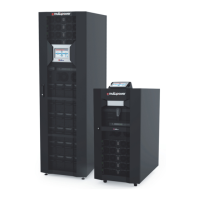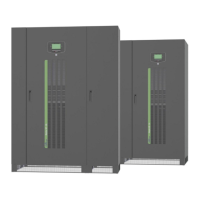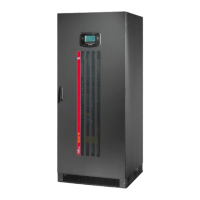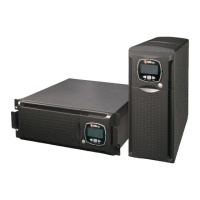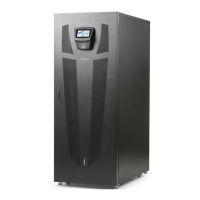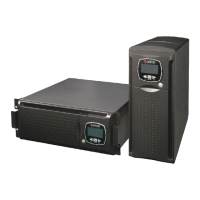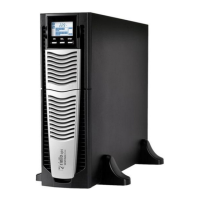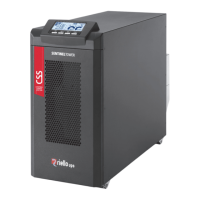‐103‐
FAULT: these are more critical problems than the "Anomaly" faults because, if they persist, they could cause the UPS
to lock out within a very short time.
CODE DESCRIPTION
F01 Internal communication error
F02 Incorrect input phase cycle direction
F03 Phase1 input fuse broken or input switch jammed (does not close)
F04 Phase2 input fuse broken or input switch jammed (does not close)
F05 Phase3 input fuse broken or input switch jammed (does not close)
F06 Phase1 input switch jammed (does not open)
F07 Phase2 input switch jammed (does not open)
F08 Phase3 input switch jammed (does not open)
F09 Positive branch capacitor pre-charge failed
F10 Negative branch capacitor pre-charge failed
F11 BOOST stage fault
F12 Incorrect bypass phase cycle direction
F14 Phase1 sinusoid inverter deformed
F15 Phase2 sinusoid inverter deformed
F16 Phase3 sinusoid inverter deformed
F17 Inverter stage fault
F19 Positive battery overvoltage
F20 Negative battery overvoltage
F23 Output overload
F26 Phase1 output switch jammed (does not open)
F27 Phase2 output switch jammed (does not open)
F28 Phase3 output switch jammed (does not open)
F29 Phase1 output fuse broken or output switch jammed (does not close)
F30 Phase2 output fuse broken or output switch jammed (does not close)
F31 Phase3 output fuse broken or output switch jammed (does not close)
F32 Battery charger stage fault
F33 Incongruence in the battery voltage measurement system
F34 Dissipator overtemperature
F36 Fan malfunction
F37 Battery charger overtemperature
F39 Incongruence in the DC BUS measurement system
F42 BOOST 1 battery fuse broken
F43 BOOST 2 battery fuse broken
F44 BOOST 3 battery fuse broken
// F45 Parallel communication bus open (1 point)
// F46 Parallel bypass request signal fault
// F47 Parallel synchronization signal fault
// = Parallel Fault
